Digital tools in classrooms are not new. But natural language processing has reached the point where computers can not only supply readers with texts and offer a variety of assists, but take running records of learners and revise assigned texts in real time or measure comprehension performances from open-ended responses. What are the pros and cons?
👣
Not an idle question. ltRRtl is committed to steering clear of Korzybski’s trap, mistaking the map for the territory. Measuring comprehension is mapping cognitive territory. To say that a computer can assess comprehension from open-ended responses implies that computers can comprehend texts as humans do.
In a world where we permit AI to pilot vehicles on the surface and in the air, we still insist on adult human supervision, even if remote. AI is a hair’s breadth away from daily use as a core teaching tool in reading. How is this going to work?
👣👣
EdWeek is reporting that AI may be a key to unlocking high-quality comprehension measurements useful in making nuanced instructional decisions. Although no one seems to be arguing that AI will replace reading teachers, there is an expectation in some quarters that AI will be a game changer:.1
This sort of reading practice is light years ahead of the materials used in Neanderthal reading clinics of the past—SRA Rate and Power Builders, New Practice Readers, etc. It might even be fun—ear training intended to sharpen the mind but never mistaken for “listening to music.”
Some question whether being anchored inside the four corners of the text can ever lead to comprehension much above a literal level, but certainly literal comprehension of a passage leading to reasoned arguments, though a narrow and specialized form of reading, is a worthwhile goal.
But is this all there is to comprehension?
👣👣👣
AI can potentially use the functionality of comprehension assessment coupled with AI’s composition functionality to customize leveled texts with the added advantage of reader interest factored into reading assignments:
Such a capability seems appealing if the goal is to teach children how to read and comprehend texts that are not very challenging but very interesting to them. Over the years would children learn to read text in the wild written by idiosyncratic humans with stiff challenges on boring topics?
👣👣👣👣
AI can replace the need for teachers to spend time listening to children read. Much as technological advancements are reducing the need for human interaction in medicine and law, AI can lead to greater efficiencies:
This application could be offered in a choice of assessment genre: error-based or miscue-based like the Qualitative Reading Inventory. Teachers could go to preferences and turn on or off the “self-correction” function. When off, AI would record any deviation from the expected response as an “error” and move on, leaving the fluency score unaffected by self-corrections. Self-corrections could be analyzed according to cueing system.
👣👣👣👣👣
Catherine Snow, a highly respected scholar in the field of reading who has contributed immeasurably to the wisdom of reading research, spoke to EdWeek and expressed skepticism about AI as an arbiter of comprehension:
Snow also raised a concern about an erosion of teacher professional judgment in matters of pedagogy with AI assessment in the classroom. She used the term teacher “instinct” and contrasted its significance with pure digital probabilistic calculation, giving teachers veto power over AI:
👣👣👣👣👣👣👣
The Common Core reading standards are themselves anchored in the Four Corners notion, the idea that everything a reader needs to comprehend a text is inside the text. It seems clear that AI can comprehend text in a literal way anchored in the text and therefore could potentially compare its map of the text’s meaning with the territory in a child’s mind based on open-ended responses.
So what do you think? A good idea waiting to go bad? Or a paradigm changer? Or just a bad idea?
https://www.edweek.org/technology/measuring-reading-comprehension-is-hard-can-ai-and-adaptive-tools-help/2023/03?utm_source=nl&utm_medium=eml&utm_campaign=eu&M=6411259&UUID=d87c8519a6b1a15f46000d8a71c48148&T=8601498
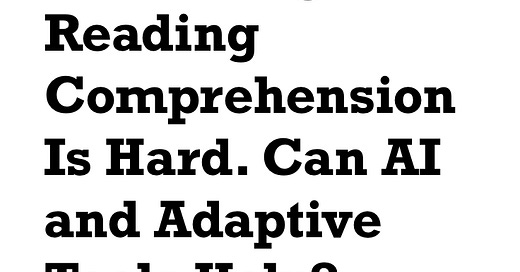



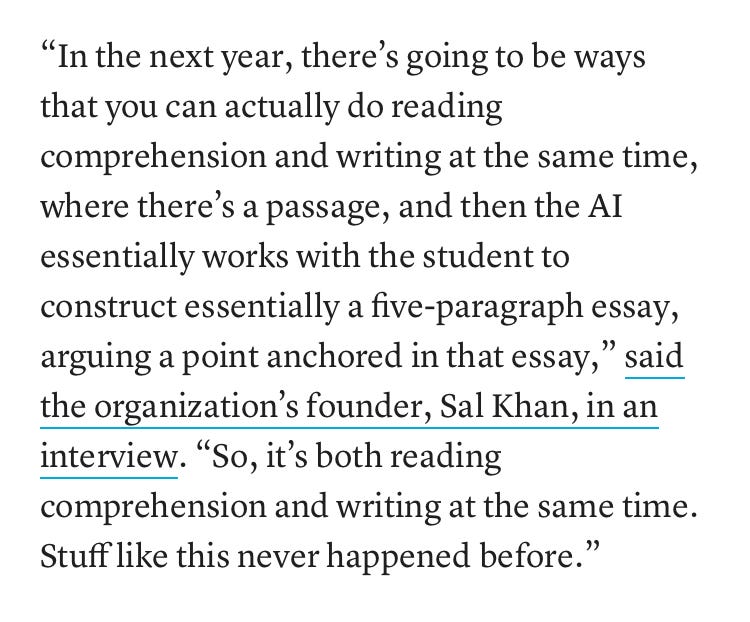
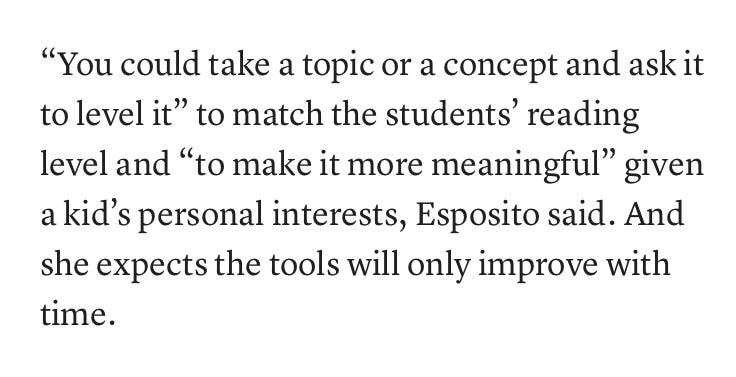
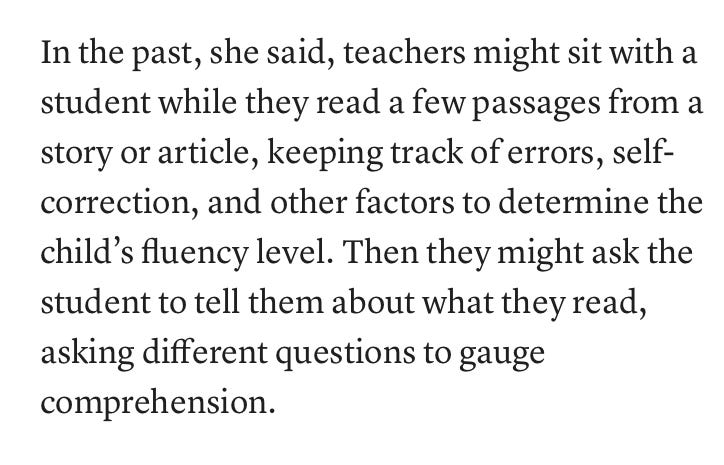
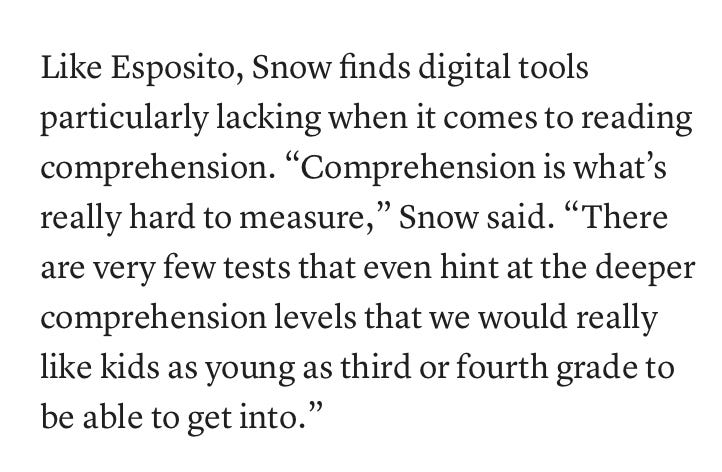

Hi Terry, I have no sure response to your questions. All I can say is the genie is not going back into the bottle. Teachers will need time, resources, and support to understand this technology and then (hopefully) leverage it to better meet students where they are. Thanks for surfacing this topic.